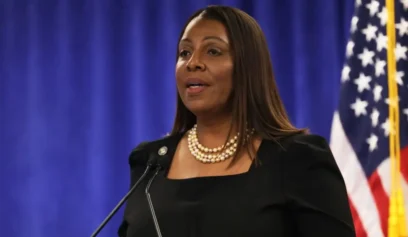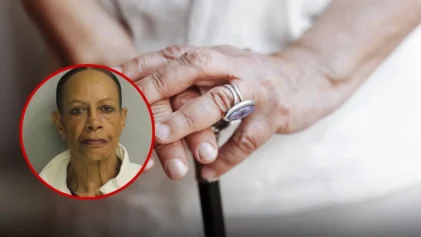Civil rights crusader Bob Moses, who was an architect of the 1964 Freedom Summer voting rights campaign and established a program to help minority students succeed in math, has died at the age of 86.
NAACP president Derrick Johnson shared news of Moses’ death in a statement on July 25, writing, “Throughout his life, Bob Moses bent the arc of the moral universe towards justice. He was a strategist at the core of the voting rights movement and beyond.” Moses died Sunday morning at his home in Hollywood, Florida, on what would’ve been Emmett Till’s 80th birthday.

Moses attended an elite public high school in New York before earning a master’s degree in philosophy from Harvard University in 1957. Moses was pursuing a doctorate but returned home to New York when his mother passed away and his father became hospitalized, and began teaching mathematics at the Horace Mann School in New York.
Robert Parris Moses was born in January of 1935 in a Harlem, New, York, neighborhood where just two months prior a violent race riot left three dead and dozens injured. The grandson of a prominent Baptist preacher who supported Marcus Garvey, Moses became one of the most influential leaders of the civil rights struggle through his example of organizing voter registration drives in rural Mississippi.
Becoming increasingly interested in the struggle for civil rights, by 1960 he quit his job at the elite prep school after going to Mississippi to see the movement for himself up close. Recognizing the power of grassroots activism, the self-effacing Moses eschewed sit-ins in favor of the more direct action of preparing Black people to pass Mississippi’s literacy test requirements and overcoming other hurdles to register to vote. He went on to become the Mississippi field director of the Student Nonviolent Coordinating Committee.
Moses eventually developed the idea for the 1964 Freedom Summer project, which saw Northern and Southern Black college students come together to increase the number of registered Black voters in Mississippi. Moses was jailed and suffered beatings many times as he tried to get Black people registered to vote. In Mississippi’s rural Amite County Moses was struck in the head with a knife handle on the courthouse steps by a cousin of the local sheriff when he tried to enter the building to find voting registrar’s office. Ignoring the bloody wound, he went inside anyway. When he filed charges against the man who beat him, an all-white jury acquitted the assailant.
When Blacks were excluded from being included among the all-white Democratic Party delegates to the 1964 Democratic Convention, Moses and fellow Mississippi organizer Fannie Lou Hamer created of the Mississippi Freedom Democratic Party to insist on being seated there, which led to Hamer’s famed “I’m sick and tired of being sick and tired” prime-time speech at the convention as she advocated for full political enfranchisement for African-Americans.
To avoid the draft amid the Vietnam War, Moses moved to Canada and then settled in Tanzania for several years before returning to the United States in 1976.
Moses believed math literacy was crucial for full citizenship just like reading literacy, and created the Algebra Project to help students of color succeed in mathematics. The idea for the program first took root when Moses’ daughter entered eighth grade at Martin Luther King Middle School in Cambridge, Massachusetts. Although Moses felt his daughter was ready to learn Algebra, he learned that the school didn’t offer the course to eighth grade students.
Moses was working on a doctorate in philosophy at Harvard at the time, and asked his daughter’s teacher if he could pull her aside and teach her himself. The teacher agreed, so long as Moses also agreed to teach three other students who wanted to take the course.
“I agreed to take on the additional three students,” remembered Moses, “and thus began the Algebra Project.”
Over the decades, and thanks to the MacArthur Fellowship “Genius” award Moses received, the program has expanded to other cities across the country, including Boston, Chicago, Oakland, Atlanta, and others.
The Algebra Project released a statement following Moses’ death.
“His transition to that higher level only inspires us all to love, struggle and live with and for our people as he did, as we continue to work to realize Bob’s vision of “raising the floor of mathematics literacy” for all young people in the United States of America,” the statement said.
A mural titled “Chain Breakers” was unveiled at Jackson State University on Saturday morning, and depicts six civil rights leaders, including Moses, who are essential to Mississippi’s civil rights history. The mural had been in the works for about two years and also includes Rep. Alyce G. Clarke, the first African-American female legislator in Mississippi, Fannie Lou Hamer, high school teacher Rose Elizabeth Howard Robinson, Louise Marshall, the first African p-American bookstore owner in Washington Addition, and Albert Powell, the first African-American florist in the community.
“We owe so much to Mr. Moses, who never wanted accolades or recognition,” Jackson State University President Thomas Hudson said on Twitter. “He simply wanted what was right. May we forever remember and respect his legacy.”


